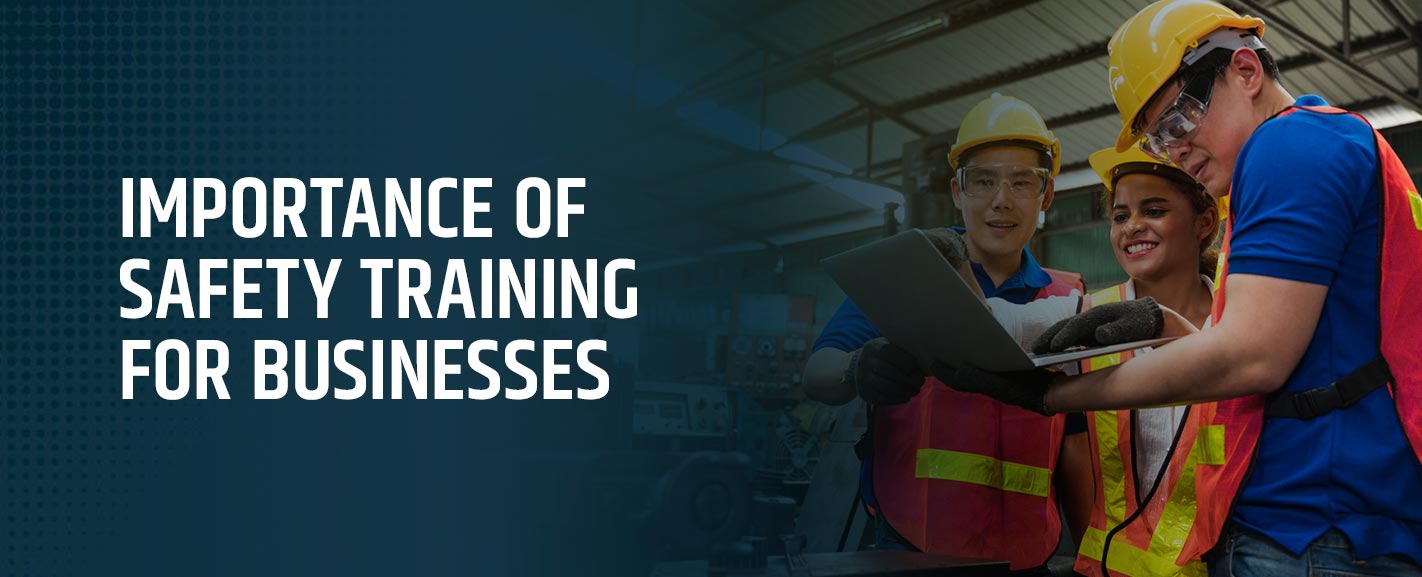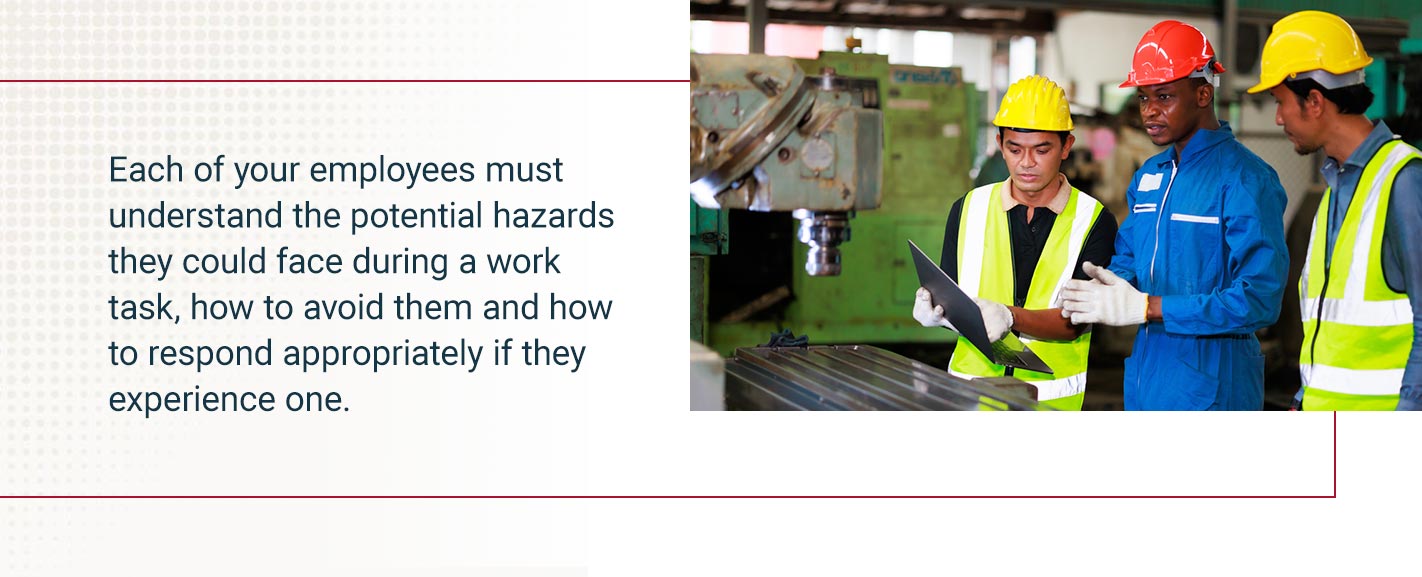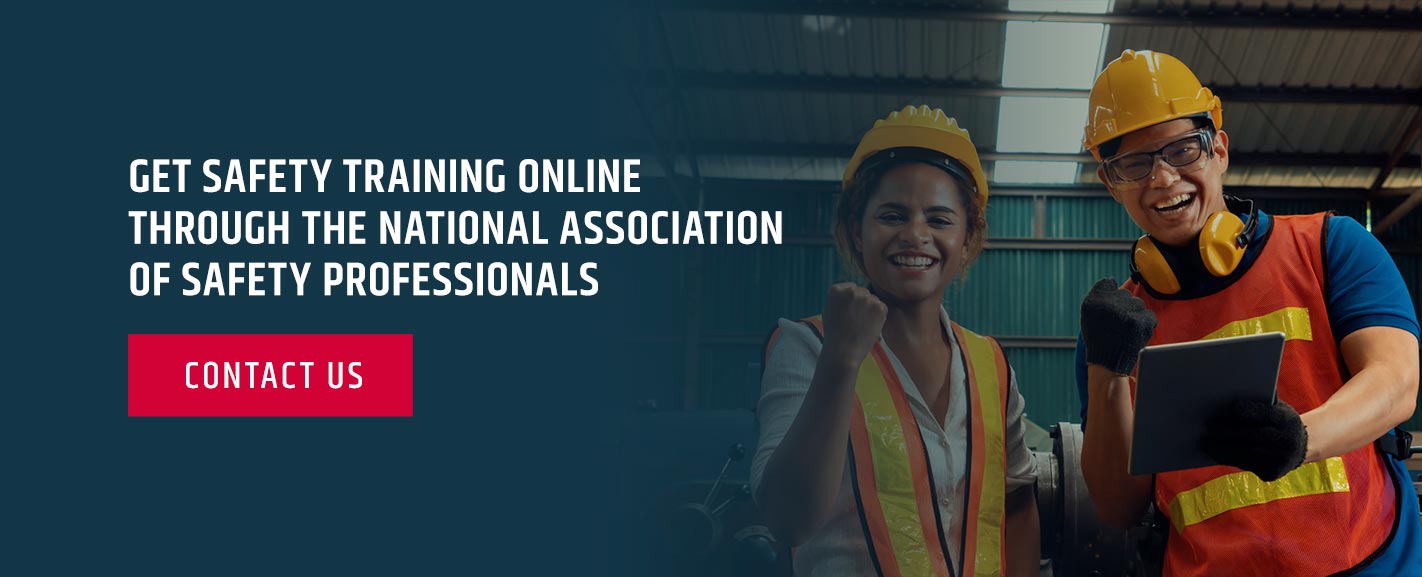
Injuries on the job are a fact of life. Workers across industries suffer severe and even fatal injuries on the job. The unfortunate truth is that most of these incidents are avoidable.
Safety training is essential for every business, whether you work in construction, manufacturing, transportation, warehousing, oil and gas, or retail. With the appropriate training, your employees can work smarter and safer to ensure they can go home to their families and return to the job site to work another day.
Learn about the importance of safety training and take the next step toward building a safer workplace for you and your employees.
What Are Safety and Health Hazards?
The first step to discovering the importance of safety training in your business is understanding hazards and the threat they pose to your workers. The Occupational Safety and Health Administration defines a workplace hazard as any activity or condition that puts employees at risk of physical or mental harm if left unaddressed.
The hazards your employees could face in the workplace differ depending on your industry. For instance, the construction industry is one of the most dangerous, accounting for one in five workplace fatalities in 2021. Potential hazards in this sector include impact injuries, falling objects, crushing, electrocution, hazardous materials, vehicle injuries and more.
While your industry may have different risks than these, the point remains — hazards may be found on every job site. You need to ensure your workers have the information they need to implement hazard controls as dangers arise, so they can handle them correctly or work to eliminate them in the first place.
What Is a Job Hazard Analysis?
You need to conduct a job hazard analysis to better understand the specific dangers your workers could face. According to OSHA, a job hazard analysis is a way to help businesses focus on tasks to identify risks before they happen. Part of this is recognizing the three primary relationships employees face on the job site:
- The employee to their task
- The employee to their tools
- The employee to their work environment
By understanding these relationships within specific job tasks, you can better predict and avoid hazards before they occur. Then, you can take proactive steps to reduce or eliminate workplace hazards for your employees.

As steps required to complete a job or task are identified it is important to think about the types of hazards. Consider these common types of hazards and be sure they are included in the JHA:
- Struck Against or Struck By
- Contact With or Contact By
- Caught In, Caught On, or Caught Between
- Fall to Same Level or Fall to Below
- Overexertion or Exposure
More examples of tasks or hazards that lead to accidents include:
- Working at heights
- Slippery surfaces
- Exposed moving machinery parts
- Fires or explosions
- Noise
- Electricity
- Toxic Emissions
- Corrosive chemicals
- Low oxygen
- Repetitive tasks
- Heavy lifting
- Overhead work
- Rigging activities
- Use of heavy equipment
- Working with powder actuated tools
5 Benefits of Safety Training
Each of your employees must understand the potential hazards they could face during a work task, how to avoid them and how to respond appropriately if they experience one. Education will significantly help your workers every day on the job.
Here are five advantages you, your business and your employees will realize through proper safety training.
1. Better Hazard Identification
One of the first benefits of safety training is giving your employees the knowledge they need to spot workplace hazards. Many injuries occur due to employee ignorance, meaning people were unaware they were at risk of getting hurt due to an unforeseen danger. With the correct safety training, employees can see these hazards in advance and avoid putting themselves in harm’s way.
The ability to identify hazards also helps foster a company culture of vigilance. Employees can warn oneanother about potential dangers and encourage each other to proceed with tasks in the safest way possible. Safety starts with hazard identification, and education is the best way to achieve that.
2. Fewer Injuries and Accidents
Identifying hazards through safety training can dramatically reduce workplace injuries. Workplace incidents vary depending on your business’ specific risk and industry. Incidents may include minor illnesses or injuries, but can also be serious events like life-threatening accidents.
To ensure reductions in injuries, you must first equip your employees with the necessary tools. Safe work starts with knowing how to complete tasks correctly.
3. Increased Productivity
When your workers are healthy and can identify and avoid risks, your business can be more productive. That happens in many ways, the first of which is that you’ll have a fuller workforce to complete tasks. Sick or injured people will need to take time off work to recover. When people aren’t available to contribute, your output can decline.
Safety training can also increase productivity by giving your workers more confidence in approaching their tasks. When workers feel sure they can identify hazards, they can proceed more efficiently. Worried employees are slower, and you can remedy this with education.
4. Reduced Compensations and Liability Costs
Every year, companies spend a large sum of money on insurance premiums, workers’ compensation, medical bills and equipment repairs. Your company can avoid many of these expenses by investing money and time in employee education.
Workers who have completed the required safety training may be less likely to experience an injury or cause potentially costly equipment damage. You could reduce your insurance premiums and avoid expensive payouts when your employees better understand what you expect from them.
5. OSHA Regulation Compliance
Though keeping employees safe is the ultimate benefit of safety training for businesses, there is another critical advantage to consider — complying with OSHA regulations. OSHA has created and set standards in place to guide and inform workplace safety. Failing to implement and follow these can lead to hefty fines and legal action.
OSHA requires safety training in many of its standards. If an OSHA inspector comes to your business and discovers your employees lack this knowledge, you could receive a citation. Ensure your employees have the training to stay OSHA compliant while working safely and intelligently every day. If you are not sure of your training requirements, OSHA has a Publication 2254 which lists ALL training requirements for various industries and can be found here.
Get Safety Training Online Through the National Association of Safety Professionals
Whether you need safety training to further your career or simply remain compliant, the National Association of Safety Professionals has the online courses you need to reach your goals. Our credential-building Certification programs will ensure you have the education to foster safer workplace practices for you and the people entrusted to you.
View our complete course catalog to find the best online safety course for you. Feel free to contact us today with any questions about our online training.






